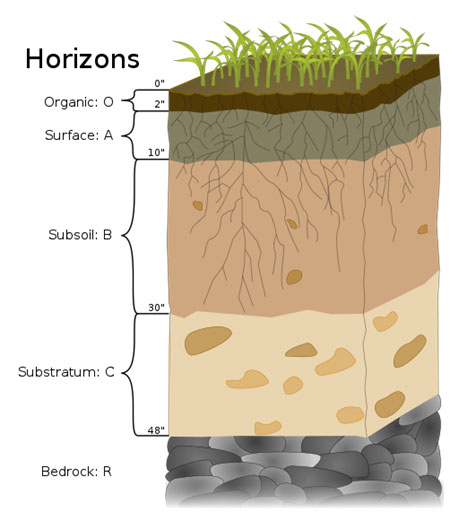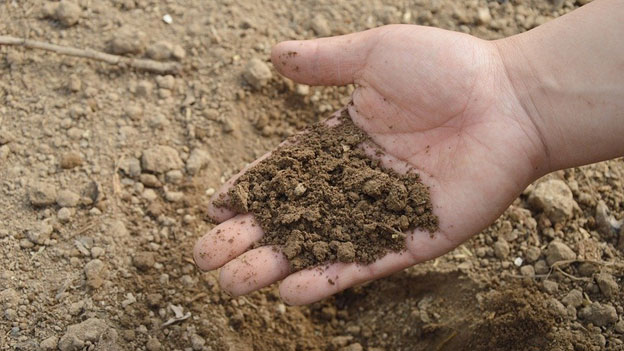Importance of Soil Fertility and Proven Ways to Fight Nutrient Imbalance
The soil comprises air, water and decayed organic matter like sand, silt and clay. But did you know, it takes almost 2000 years for natural processes to make 10 cm of fertile soil from bedrock? Just like humans, soil also needs certain nutrients and minerals to grow a better yield. Soil fertility can be defined as the efficacy of the soil to provide an atmosphere that is suitable for plant growth. Maintaining or increasing soil fertility is one of the most important things farmers need to do to increase output. To achieve this, farmers need to know the characteristics and constraints of their soil and use only suitable agricultural practices and methods for making the soil more fertile.
Two of the most important physical properties that affect soil fertility are its texture and structure. The texture is the combination of sand, clay and silt in the soil. While the structure is the number of pores in the soil. Many types of organisms live in the soil, like bacteria, fungi, insects, earthworms etc., that helps to transform the nutrients from one place to another and degrades toxic substances from the soil. Generally, nutrients are not directly available to the crop and are made available to the crop with the help of organic matter like fertilizers and nano-fertilizers, which penetrate the soil to provide the crops with much-needed nutrients and nitrogen balance.

Credit – EssensStrassen on Wikimedia under CC BY-SA 4.0
Types of Soil Fertility
To understand soil fertility better, here are the types of soil fertility that are essential for maximising crop yield and giving better yield.
Inherent or Natural Fertility
The soil is a natural bank for NPK which are namely Nitrogen, Phosphorus and Potassium, which are essential for normal growth and yield of the crop. The soil that naturally contains the essential nutrients for growth is considered fertile and is known as inherent or natural fertility.
Did You Know?
In India, soil contains 0.2 to 0.3 percent Nitrogen, 0.03 to 0.3 percent phosphorus and 0.4 to 0.5 percent potassium.
Acquired Fertility
When the fertility of the soil is achieved through external sources like manure, fertilisers, tilling and irrigation, the type of fertility is defined as acquired fertility. It is important for farmers to understand the nutritional content of the soil and apply fertilizers based on the soil testing results.
Ways to Improve Soil Fertility

Credit: UNEP Twitter Handle
One can achieve soil fertility through the following ways: -
Performing Soil Analysis
Performing regular soil analysis can tell the farmers about the nutrients that are deficient in the soil and crops that are fit for the soil. Once the farmers know about the various nutrient composition in the soil, they can provide the nutrients that are required by the soil based on soil testing.
Maintaining Organic Matter
Maintaining and building organic matter in the soil helps the farmers to safeguard themselves from the side effects of chemical fertilizers that eventually degrades the quality of the soil in the long run.
Maintain Soil Salinity
Soil salinity affects almost all aspects of the quality of the soil and its ability to produce good quality yield. It is always advisable for farmers to manage soil salinity and prevent the accumulation of salt on the top layer of the soil to maintain soil fertility and soil productivity.
Ploughing
Farmers must adhere to proper irrigation practices like ploughing to provide numerous benefits to the soil. Ploughing at regular intervals helps open the pores of the soil for aeration, prevents erosion and increases the water holding capacity of the soil.
Maintain Crop Rotation
The crop set is specially designed to suit a particular season and rotation of the crops on the same field can help in increasing the self-reliance of the soil and controlling the pests and weeds.
Intercropping
Intercropping is the practice of growing multiple crops on the same field to maximise soil fertility and productivity. Different varieties of crops are chosen specifically to complement each other based on their size, roots, nutritional requirements and probable pest attacks.
In all agricultural practices, significant quantities of nutrients and minerals get depleted in the soil over time which can be reversed by understanding different ways of improving soil fertility. Maintaining a healthy soil bed is maintaining a healthy practice toward sustainable development.





